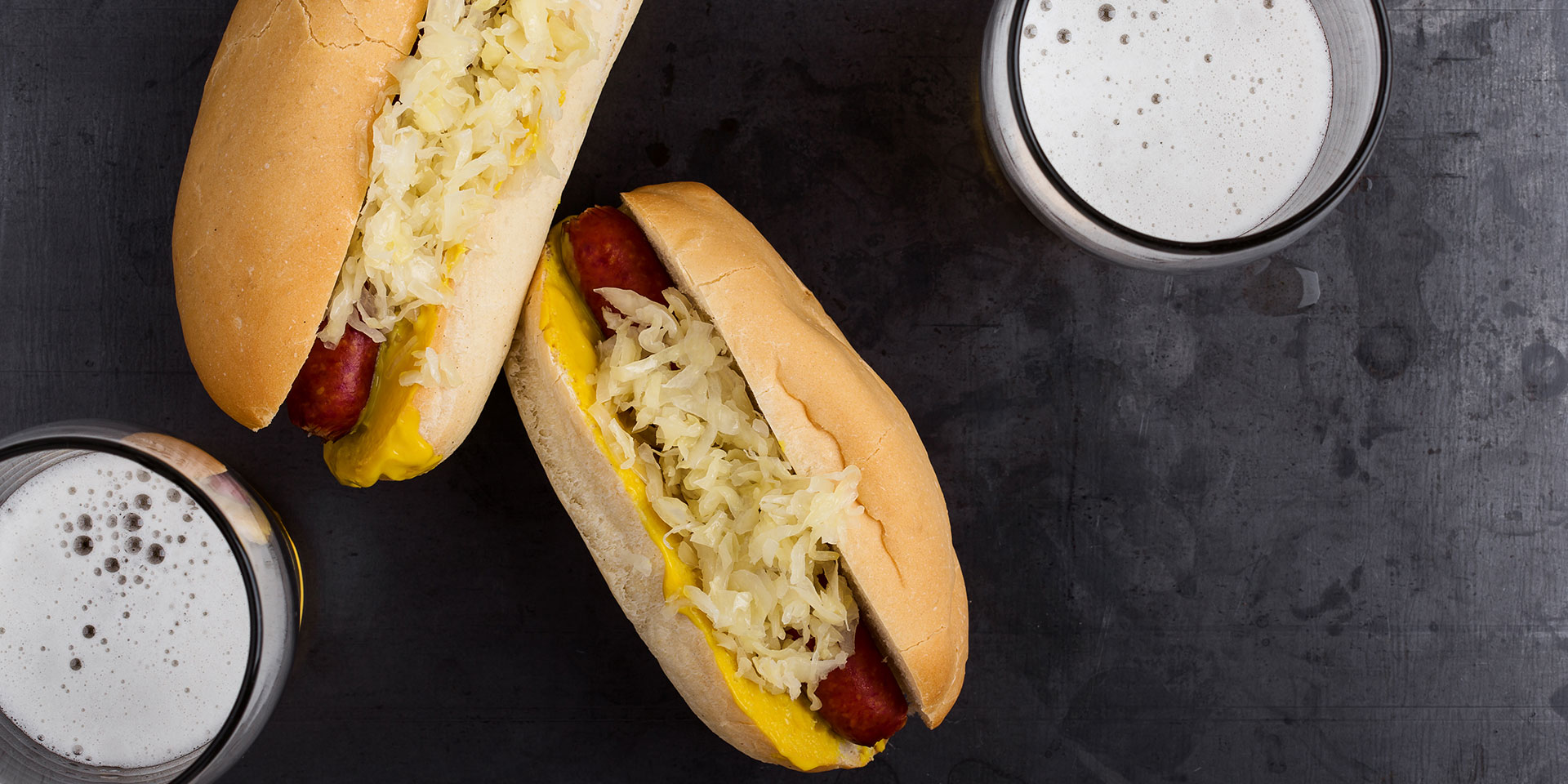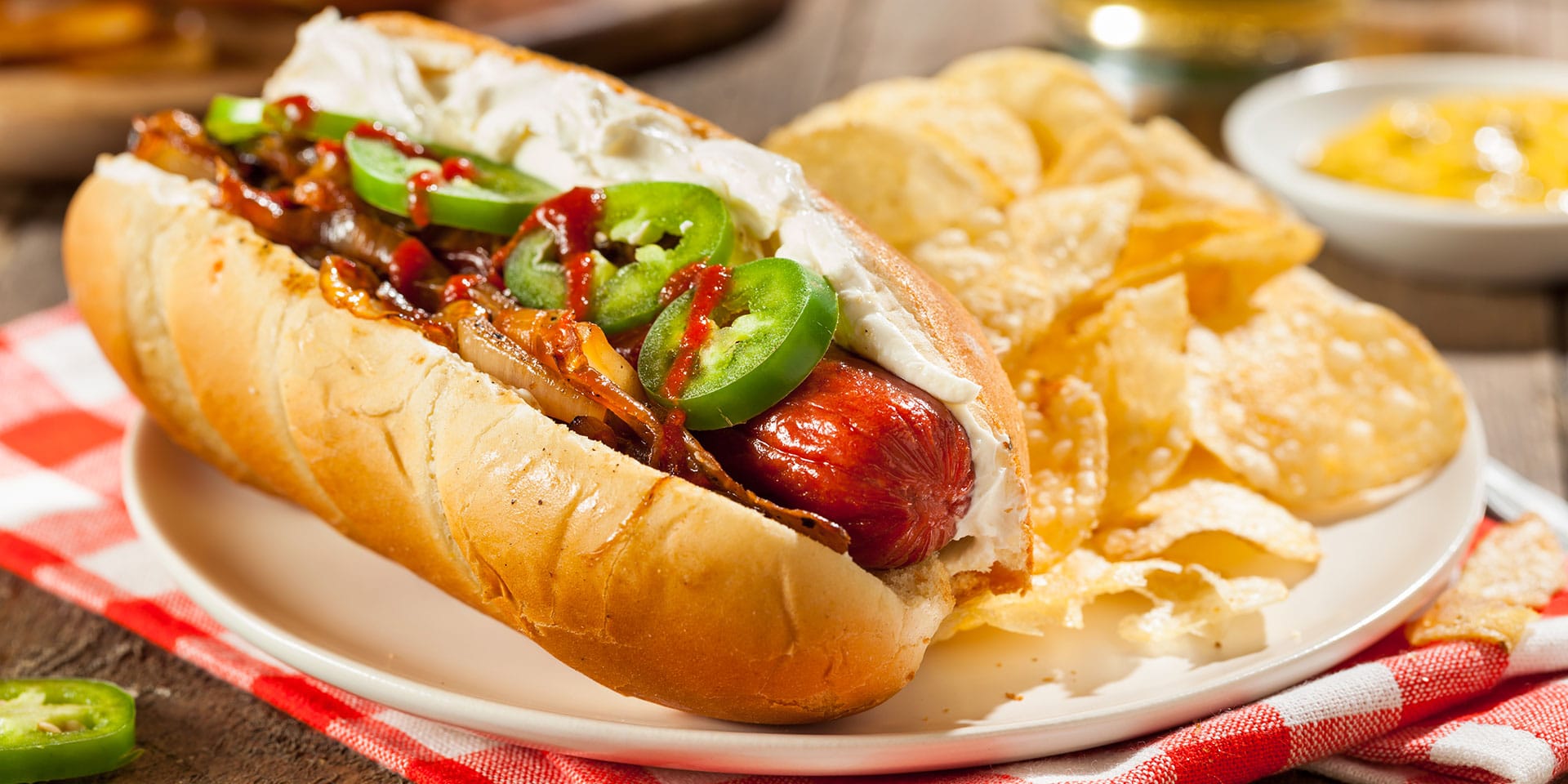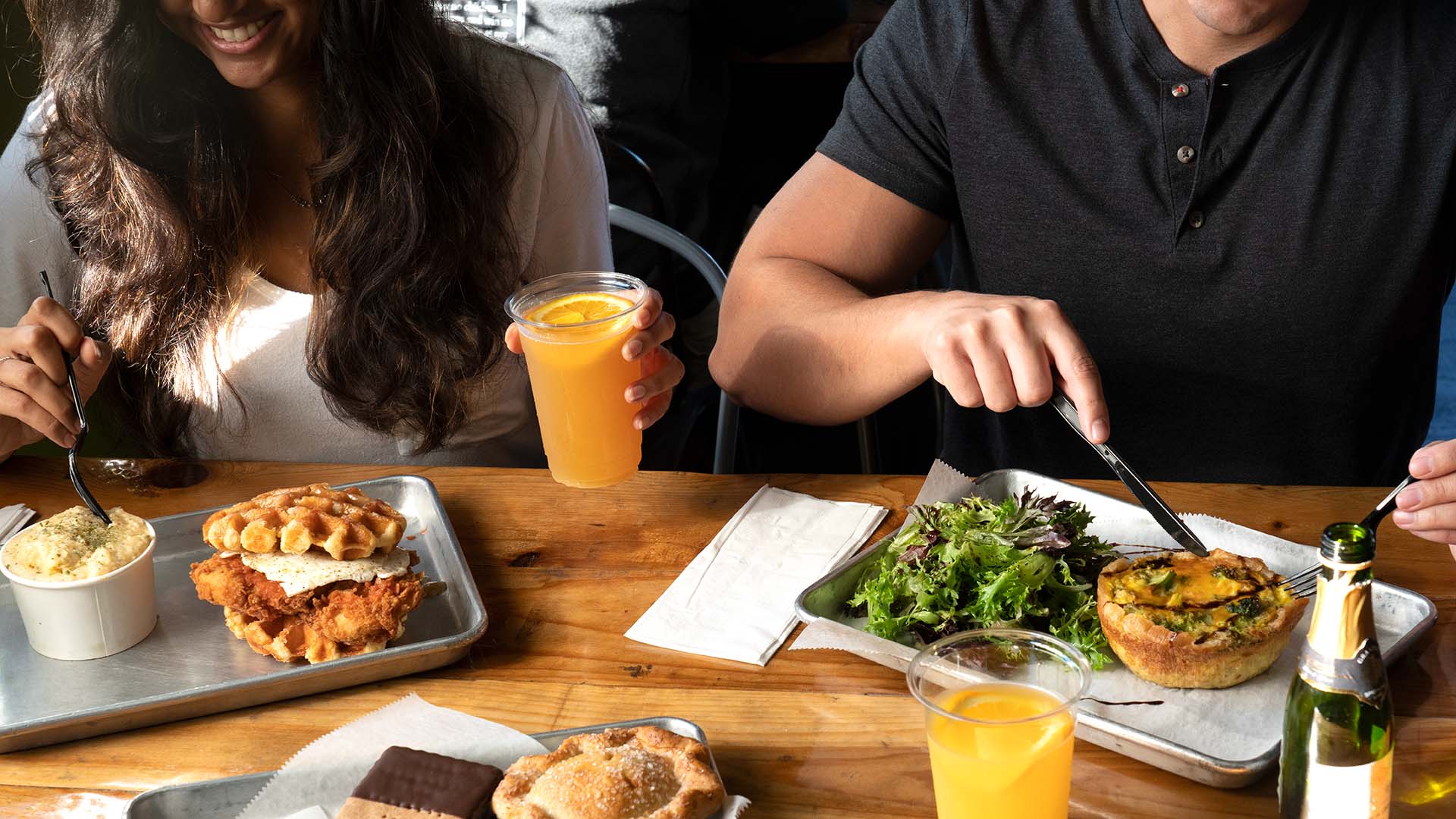
Mustard and a dollop of sauerkraut are all you’ll need on your dog in New York City. (Photo: Getty Images)
Eat + DrinkDoggone It: Where to Celebrate Signature Hot Dogs Across the U.S.
By Naomi TomkyDon’t put ketchup on your hot dog in Chicago, but do order cream cheese with it in Seattle: Almost every city in America has a signature hot dog and rabid fans of the local version. But why does this simple street food produce such regional divides?
In this internet age, food trends diffuse quickly across the nation. But as the hot dog came of age in New York City at the end of the 19th century and the masses embraced it as a street-food and baseball-stadium staple, its preparation slowly morphed per the traditions and tastes of the regions in which it landed.
Of course, the point of travel is to meet the specialties of new cities, so if you’re open to a regional hot dog taste test, check out these fan favorites from around the country.
The New York Dog
When Charles Feltman, a German baker, set up the first hot dog stand in New York City’s Coney Island in 1871, he sold more than 3,500 frankfurters, and The Big Apple’s love of the dog hasn’t flagged since.
Just after the turn of the century, Feltman’s former employee, Nathan Handwerker, opened his own hot dog shop nearby, undercutting the original’s price by five cents, and boasting of his kosher-style dog.
The all-beef frankfurter had staying power, and today the typical New York griddled dog takes just two toppings: deli-style yellow mustard and either steamed onions or a dollop of sauerkraut.
Try it here: Get the iconic long, slim version with a distinct charred flavor at Gray’s Papaya (outposts throughout the city). Try the recession special: $4.95 for two dogs and the shop’s famous papaya drink to wash them down is the original happy meal for New Yorkers.
Chicago Dog
As complicated as New York’s version is simple, the Second City whips up a first-rate dog, spiced up and traditionally served on a poppy-seed bun. A pair of Austro-Hungarian immigrants credited with developing the all-beef wiener called their version “Vienna Beef” and started serving it at the 1893 Chicago World’s Fair.
As vendors added their own twists, eventually today’s “dragged through the garden” version became codified: sport peppers, mustard, pickle spear, sweet pickle relish, tomato slices, chopped onion and celery salt.
Try it here: Portillo’s has been a Chicago classic since 1963 and does a to-the-letter version of the classic (along with another local specialty, the Italian beef sandwich). Just know that wherever you go, the worst thing you could do is try to get ketchup on your dog in Chicago.
Seattle Dog

Nobody cares if you order a regular hot dog or a Polish dog at Seattle’s street stands: All that matters is you get your toasted bun slathered with cream cheese. And yes, it ends up slathered— the gooey cream cheese is often dispensed via caulking gun. Locals claim the creamy topping originated from a guy who operated both a hot dog and bagel cart; the cream cheese simply crossed over.
Once loaded up with cream cheese, patrons customize, but grilled onions and Sriracha tend to be a winning combination.
Try it here: Monster Dogs, a late-night food-cart chain, makes the quintessential Seattle dog (including a veggie option), complete with onions cooked on the flattop, grilled wiener and, of course, a hefty squirt of cream cheese.
Sonoran Dog
This Southwestern specialty — a bacon-wrapped dog stuffed in a bolillo roll — has its roots in Mexico.
A cross-cultural version of the all-American dog, the Sonoran’s toppings list reads like a series of taco fillings. Besides the bacon, you’ll get pinto beans, grilled and/or fresh onions, chopped tomatoes, mayonnaise, mustard and jalapeño salsa piled onto an oversized steamed bun — plus avocado and cheese.
It’s said that in the 1940s, just as tamales were becoming popular in Arizona (known as “Mexican hot dogs” at the time), the American-style hot dog drifted south to Hermosillo, the capital of Mexico’s Sonora state, and through the rest of Mexico.
It was here that bacon was added to the mix, likely when the bacon-wrapped dogs became popular at baseball games in Mexico.
Whatever hot dog tweaks took place south of the border, they didn’t stay there long. By the early ’90s, the Sonoran dog remigrated back to the U.S. and became a popular food-cart staple, and the vendors who sold it became known — at least in Tuscon — as “dogueros.”
Try it here: Tuscon’s El Guero Canelo, now a three-shop chain, began as a cart in 1993 and has done much of the legwork in popularizing the Sonoran Dog here in the U.S., serving it alongside a menu of Sonoran regional specialties.
Half-Smoke
Nobody knows for sure if Washington, D.C.’s signature dog’s name comes from it being smoked — but not overly so — or from its half-pork/half-beef makeup. Some say it’s because the dogs are smoked for half their cooking time and later cooked on a griddle.
Regardless, the half-smoke does have a smokey flavor to it and is a bit more coarsely ground than the typical dog.
Raymond Briggs, the original owner of Briggs and Co. meatpacking, is thought to have invented the style in the early 20th century. Unfortunately, nobody bothered to ask him before he died why it’s called a half-smoke, so the name remains a mystery.
Still, a few things are certain. Most are half-pork, half-beef (but not all!) and have just a little hint of spice — not that you can tell. When served properly, the half-smoke barely peers out from under a pile of mustard, chopped raw onions and chili.
Try it here: Ben’s Chili Bowl is the traditional home — even Obama ate there. But no, they don’t know why it’s called a half-smoke either.







